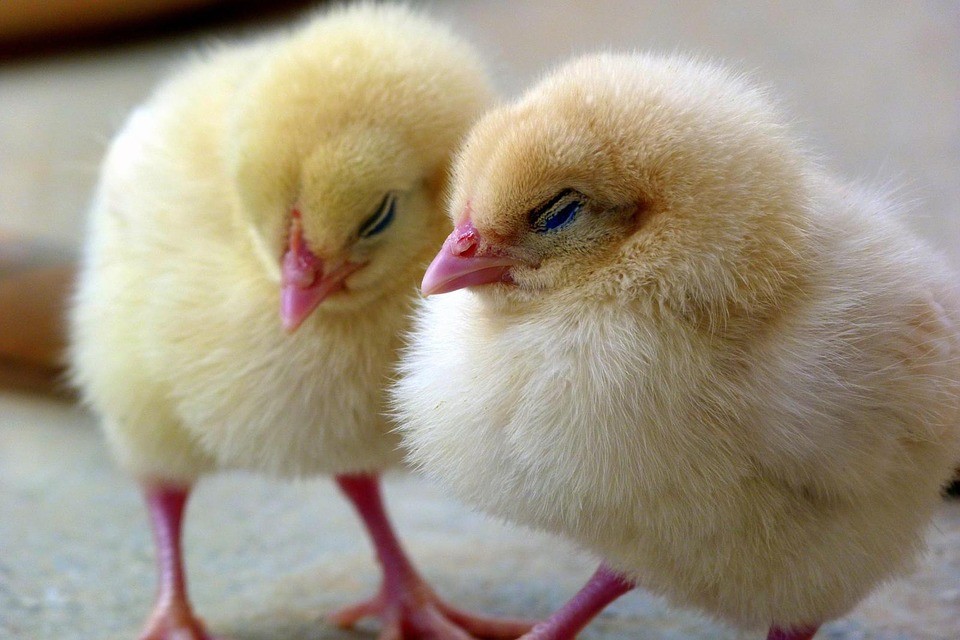I am quite amazed by how the hideous practice of chick culling is still relatively unknown, especially since it affects all kinds of industrialized egg production – no matter if free-range, organic, or battery cage.
It all started over the last century, when the chicken industry started to raise two different breeds of chicken with two different purposes: the “broilers”, that are raised for meat consumption, and the “layers” that are raised (yes, you guessed it right) to lay eggs. The baby male layers are then considered mistakes of no use and culled the same day they are born.

This method is not just overwhelmingly brutal but also utterly inefficient and bad for business. In most cases, sexing chickens requires trained humans, who pick up each chick and check its genitalia. As it’s easy to imagine, this is quite expensive and time-consuming.
Over the past few years, attempts to tackle this problem have been blossoming worldwide. In 2016, the United Egg Producers, which represents almost all of US egg farms, committed to stop culling male chicks by 2020 or “as soon as it is commercially available and economically feasible.” The United Egg Producers worked on this issue together with The Human League, a preeminent farm animal protection non-profit. This unusual collaboration highlighted how the problem is economical as much as ethical.

As recent as July 2018, the Canadian government announced that it will provide $ 844,00 to the Egg Farmers of Ontario to study ways to prevent the culling of male chicks. More concretely, as trade journal Poultry World reports, the project being funded should lead to the commercial adoption of the imagining technology that enables sex-detection of the eggs soon after they are laid.
Also in July, animal rights organization PETA launched the campaign “Save the Boy Child” on college campuses in India to inform students about the harsh reality of male chick culling (the campaign also seeks to inform about the sad destiny of male calves in the dairy industry that, in the country, are not suited for meat consumption.)
At the same time, several startups around the world are working to further develop the scanning technology that might save six billion lives a year. Here in the Netherlands, for example, InOvo is a Leiden University spin-off company that is developing the prototype of a sorting device that could determine the chicks’ gender halfway through incubation.
Even more ambitiously, Israeli startup EggXYt is developing an ultrasound technology that enables sex detection of chick embryos immediately after the eggs are laid and before they enter the incubation process.
It then seems that different parts are tackling the problem. And hopefully, the conjoined efforts of governments, charitable organizations, and tech startups will end this gruesome practice in the coming years.





